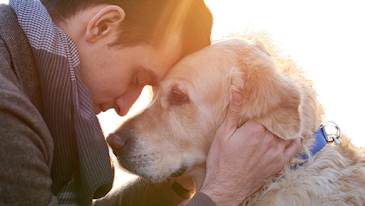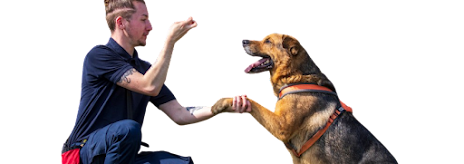Definition of a dog: This section will begin with a concise explanation of what a dog is - a domesticated mammal belonging to the Canidae family, descended from wolves and bred by humans for various purposes.
Dogs are one of the most popular and widely kept pets around the world. They come in various breeds, each with unique physical characteristics and temperaments.
Physically, dogs typically have four legs, a tail, a muzzle, and a well-developed sense of smell. They also have sharp teeth adapted for biting and tearing. Dogs are known for their ability to communicate through barking, whining, and body language.
Throughout history, dogs have served various roles, such as hunting companions, herding livestock, guarding property, assisting people with disabilities, and providing companionship and emotional support. Their adaptability, intelligence, and diverse skills have made them valuable members of human society for thousands of years.
As social animals, dogs form strong bonds with their human families and often display behaviors that demonstrate their loyalty and attachment. They require regular care, including proper nutrition, exercise, grooming, and healthcare, to ensure their well-being.
Historical significance of dogs as domesticated animals: Here, we'll delve into the historical background of dogs' domestication, highlighting their roles in ancient societies, such as hunting, herding, guarding, and companionship.
Evolution and Domestication of Dogs
Origin of dogs from wolves: This section will discuss the prevailing theories and scientific evidence supporting the evolutionary link between wolves and dogs.
The process of domestication: We'll explore how early humans influenced the domestication of dogs over thousands of years, leading to the various breeds we have today.
Early roles of dogs in human societies: This part will focus on the diverse roles dogs played in ancient civilizations, such as assisting in hunting, guarding settlements, and providing companionship to early humans.
Physical Characteristics of Dogs
Diversity in breeds and appearances: Here, we'll highlight the vast array of dog breeds, ranging in size, coat type, and physical features, resulting from selective breeding.
Common physical traits of domestic dogs: This section will cover the general physical characteristics shared by most domesticated dogs, such as four legs, a tail, and a highly developed sense of smell and hearing.
Adaptations that make them suitable for domestication: We'll explore the specific traits that made dogs well-suited for living alongside humans, including their ability to form social bonds and their trainable nature.
Behavioral Traits of Dogs
Social nature and pack mentality: This part will delve into dogs' innate social behaviors, their hierarchical structure within packs, and how these traits translate into their interactions with humans.
Communication methods and body language: We'll discuss how dogs communicate with each other and with humans through vocalizations, body postures, and facial expressions.
Loyalty and bond with humans: This section will emphasize the strong emotional connection that dogs often develop with their human caregivers, leading to their reputation as loyal companions.
Dogs as Companions and Working Partners
Roles of dogs in modern society: Here, we'll focus on the diverse roles dogs play in contemporary society, including being beloved pets, therapy animals, search and rescue dogs, and working in law .
enforcement and service roles
Therapeutic benefits of owning dogs: This section will explore the positive impact that dogs have on human mental and emotional well-being, including reducing stress, anxiety, and depression.
Service dogs and their specialized training: We'll delve into the rigorous training that service dogs undergo to assist individuals with disabilities, highlighting their invaluable contributions.
Training and Care of Domestic Dogs
Importance of early training and socialization: This part will stress the significance of early training and proper socialization to ensure a well-behaved and well-adjusted dog.
Common obedience commands and training techniques: We'll outline some essential obedience commands and discuss positive reinforcement training methods.
Responsible pet ownership and care guidelines: This section will cover the responsibilities of dog owners, including providing proper nutrition, exercise, healthcare, and attention.
Dogs in Culture and Religion
Dogs in various cultures and their symbolic meanings: Here, we'll explore how dogs have been revered, respected, or symbolized in different cultures and societies throughout history.
Religious significance of dogs in different belief systems: This section will touch upon dogs' roles in various religious contexts, highlighting their symbolism and associations with deities or spiritual beliefs.
Dogs in literature, art, and folklore:
We'll discuss how dogs have been depicted and celebrated in literature, art, and folklore across different cultures and time periods. Challenges and Ethical Considerations
Overpopulation and the issue of stray dogs: This part will address the problem of dog overpopulation and the challenges posed by stray dogs in many regions.
Animal welfare and responsible breeding practices: We'll emphasize the importance of responsible breeding to ensure the well-being of both parent dogs and their offspring.
Legal and ethical concerns related to dog ownership: This section will touch on relevant legal and ethical issues concerning dog ownership, such as leash laws, animal cruelty, and abandonment.
Health and Nutrition
Common health issues in domestic dogs: Here, we'll discuss some prevalent health problems that dogs may face, along with the importance of regular veterinary check-ups.
Purchase Dog food & treats on Amazon in best price Click HereImportance of proper nutrition: This part will emphasize the significance of providing balanced and appropriate diets for dogs to maintain their overall health and well-being.
Dietary requirements: We'll explore the specific nutritional needs of dogs at different life stages and how to meet those needs through proper feeding practices.
Conclusion
Recap of the significance of dogs as domestic animals: This section will summarize the key points discussed throughout the outline, highlighting the vital role dogs play in human society.
B. Reflection on the enduring bond between humans and dogs: We'll conclude by reflecting on the special connection between humans and dogs and the benefits derived from this unique relationship.
C. Final thoughts on the importance of responsible dog ownership: The conclusion will end with a call to action, encouraging responsible dog ownership and promoting the welfare and well-being of dogs in our communities.




.png)










0 Comments